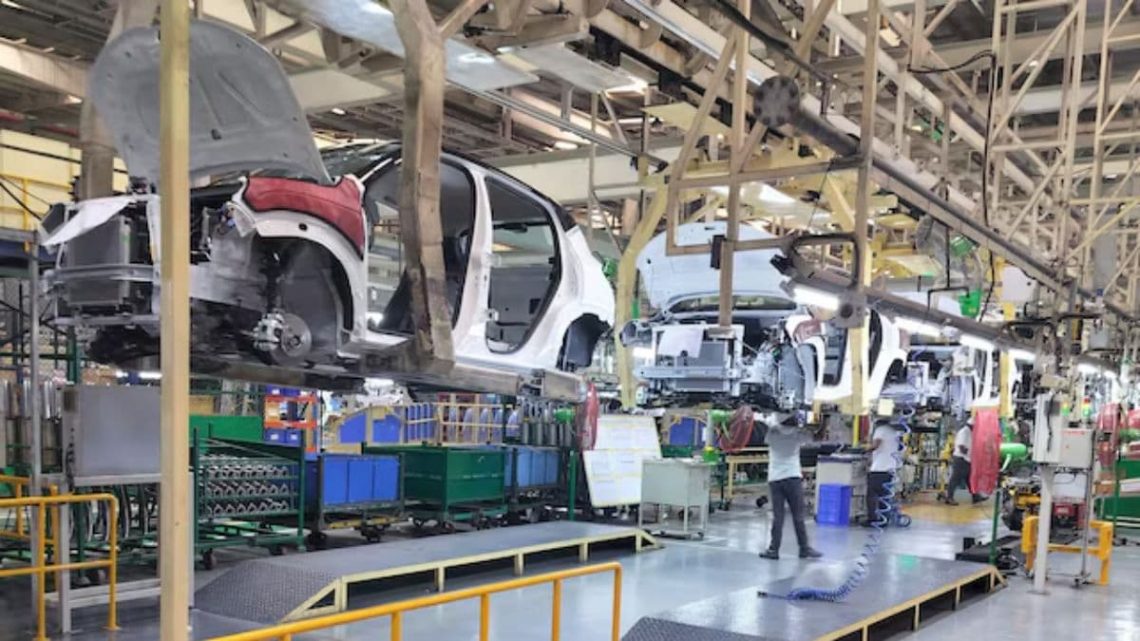Even as Indian economy is set to grow at the four-year low in 2024-25 at 6.4 per cent, the Economic Survey has said India is about to get back into the fast lane after years of coronavirus pandemic-induced economic decline.
Union Finance Minister Nirmala Sitharaman on Friday tabled the Economic Survey 2024-25 in the parliament, a day before she would present the Budget 2025-26. The Economic Survey, prepared by Chief Economic Adviser V Anantha Nageswaran and his team, painted a sobering image of the Indian economy and set modest expectations for financial year 2025-26.
The Economic Survey said that while manufacturing declined in 2024-25, services and agricultural sectors performed well and drove India’s economic growth.
The Economic Survey linked the decline in manufacturing to a slew of reasons, such as adverse weather, global manufacturing slowdown, and weak demand abroad. It said that there were signs of improvement in December 2024 and, said CEA Nageswaran separately, the Indian economic growth is expected to overcome such challenges in the second half of 2025.
In the financial year 2024-25, the Indian gross domestic product (GDP) is expected to grow at 6.4 per cent, according to the Economic Survey.
This would be the lowest growth rate in four years. The figure is even lower than the downward revision made by the Reserve Bank of India (RBI) in December when it lowered GDP growth projection for 2024-25 to 6.6 per cent from 7.2 per cent.
For the financial year 2025-26, the Economic Survey has set modest expectations. It said the economy would grow in the range of 6.3-6.8 per cent.
Despite such figures, the Economic Survey said India “displayed steady economic growth” and dubbed the expectations for 2025-26 as “balanced”.
The economy in 2024-25 was driven by agriculture and services, with rural demand improving on the back of record Kharif crops’ production and favourable agricultural conditions, said the Economic Survey.
Even as manufacturing declined, fiscal discipline and strong external balance supported by a services trade surplus and healthy remittance growth contributed to macroeconomic stability, providing factors for “a solid foundation for sustained growth amid external uncertainties”, said the Economic Survey.
As for the common person, the Economic Survey noted that retail inflation fell from 5.4 in 2023-24 to 4.9 in 2024-25 even though food inflation rose significantly at times in the year. The survey also sought to downplay food inflation and said that the rise in prices was not uniform but limited to a few items.
“Food items constitute about two-fifths of the consumer price index in India. Hence, the Consumer Food Price Index (CFPI) is a significant determinant of retail inflation. In recent years, food inflation has been a major contributor to headline inflation. However, an increase in prices is not widespread across all food categories. It is primarily driven by a few items,” said the Economic Survey.
India’s manufacturing index fell to a 12-month low in December as the Manufacturing Purchasing Managers’ Index (PMI) fell to 56.4 from 56.5 in November — the November’s figure was itself the lowest in the year.
The Economic Survey linked it to supply chain disruptions, weak demand abroad, and bad weather in India.
The Economic Survey further noted that the declining manufacturing is not unique to India but is a global phenomenon. It noted that the year began with strong global manufacturing PMI, expanding for the first time since mid-2023 and remained so through the first half of the year, but began declining by July 2024.
As for the reasons for the industrial slowdown in India, the Economic Survey noted:
Despite such a slowdown, the post-monsoon expected pick-up in government capital expenditure, sectors such as cement, iron, and steel are expected to see a recovery and mining and electricity sectors are expected to normalise after the monsoon-related disruptions, said the Economic Survey.
There are already signs that improvement is taking place.
The Economic Survey noted that the expansion rate for December 2024 exceeded its long-term average, driven by new business gains, robust demand, and advertising efforts. At the same time, international orders grew to a four-month high in the third quarter, signalling recovering demand abroad.
Link to article –
‘Getting back into the fast lane’: What Economic Survey says about the health of Indian economy

